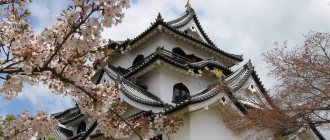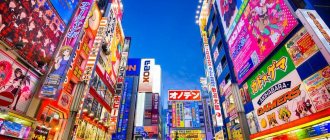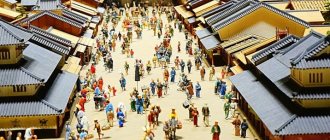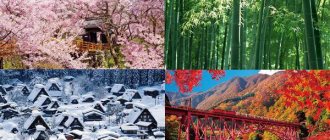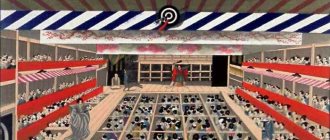What is the artistic culture of Japan? How did it develop? We will answer these and other questions in the article. Japanese culture was formed as a result of a historical movement that began when the Japanese moved from the mainland to the archipelago and the civilization of the Jomon period was born.
The current enlightenment of this people has been greatly influenced by Europe, Asia (especially Korea and China) and North America. One of the signs of Japanese culture is its long development in the era of complete isolation of the state (policy of sakoku) from all other countries during the reign of the Tokugawa Shogunate, which lasted until the mid-19th century - the beginning of the Meiji era.
Influence
How did Japanese artistic culture develop? Civilization was significantly influenced by the isolated regional location of the country, climatic and geographical features, as well as natural phenomena (typhoons and frequent earthquakes). This was expressed in the extraordinary attitude of the population towards nature as a living being. A feature of the Japanese national character is the ability to admire the flowing beauty of the Universe, which is expressed in many types of art in a small country.
The artistic culture of Japan was created under the influence of Buddhism, Shintoism and Confucianism. These same directions influenced its further development.
Dogu figures
Some types of art were very popular, but disappeared over time. However, now they again seem very modern, for example, Dogu figurines dating back from the 10th to the 2.3rd millennium BC. Some people think that these bulky figures with an astonished look look like astronauts. Dogu—ancient alien statues? No. Archaeologists have studied how the appearance of the figurines evolved. Initially, Dogu resembled women with a narrow waist, steep hips and ample breasts. They most likely represented a mother goddess who was worshiped by people in ancient Japan. Later, complex decorations were added to the Dogu figures, and their shape changed greatly. It was these figurines that gave rise to speculation about their cosmic origin.
Hieroglyphs
The image of Japanese artistic culture is embodied in a unique verse called haiku (hoku). This country also has a highly developed art of calligraphy, which, according to legend, arose from heavenly divine images. It was they who breathed life into writing, so the population is sensitive to every sign in spelling.
There are rumors that Japanese culture was given by hieroglyphs, since from them the images surrounding the inscription emerged. A little later, a strong combination of elements of painting and poetry in one work began to be observed.
If you study a Japanese scroll, you will find that the work contains two types of symbols. These are signs of writing - seals, poems, colophenes, as well as paintings. At the same time, Kabuki theater gained great popularity. A different type of theater - No - is preferred mainly by military personnel. The samurai of Japan, their severity and cruelty, had a strong influence on Noh.
Samurai and geisha
People from noble families formed a special class of military and feudal lords. These included minor nobles who had neither money nor title. They could achieve a special position in society only in one way - by serving the emperor. This is how everyone learned about samurai. Samurai are a true symbol of Japanese culture. There were no such people anywhere else in the world.
By the 13th century, samurai had become a significant class in the country, serving the aristocracy and nobility.
The main religion of the samurai was Zen Buddhism. They learned composure, self-control, and knew military science and skill well.
Geisha are another symbol of Japanese culture. They were different in appearance, had characteristic makeup and hairstyle. The duty of geishas was to entertain guests. In artistic Japanese culture, a geisha was an educated girl who could carry on a conversation.
At first, men dressed up as geishas, but later schools for girls began to open. It was not easy to get there, since there was a serious selection process. The school taught girls from poor families whose parents could not support them or provide them with a good education. More precisely, they sold their daughters, thereby ensuring a comfortable life for themselves.
Painting
The artistic culture of medieval Japan has been studied by many specialists. Kaiga painting, which in Japanese means drawing or painting, played a huge role in its development. This art is regarded as the oldest type of painting in the state, which is determined by a huge number of solutions and forms.
In it, nature occupies a special place, which defines the sacred principle. The division of painting into sumi-e and yamato-e has existed since the tenth century. The first style developed closer to the fourteenth century. It is a kind of monochrome watercolor. Yamato-e are horizontally folded scrolls that were usually used in the design of works of literature.
A little later, in the 17th century, printing on tablets - ukiyo-e - appeared in the country. Masters depicted landscapes, geishas, and famous Kabuki actors. This type of painting had a strong influence on the art of Europe in the 18th century. The emerging trend was called “Japanism”. In the Middle Ages, Japanese culture went beyond the country's borders - it began to be used in the design of stylish and fashionable interiors around the world.
Calligraphy
Oh, how beautiful the artistic culture of Japan is! The achievement of harmony with nature can be seen in every segment of it. What is modern Japanese calligraphy? It is called shodo (“the path of notification”). Calligraphy, like writing, is a compulsory discipline in Japanese schools. Scientists have found that this art came there at the same time as Chinese writing.
By the way, in ancient times a person’s culture was judged by his level of calligraphy. Today there are a large number of writing styles, and they are developed by Buddhist monks.
Sculpture
How did Japanese culture emerge? We will study the development and types of this area of human activity in as much detail as possible. Sculpture is the oldest type of art in Japan. In ancient times, the people of this country made figurines of idols and dishes from ceramics. Then people began to install haniwa sculptures made from baked clay on the graves.
The development of sculptural craft in modern Japanese culture is associated with the spread of Buddhism in the state. One of the most ancient representatives of Japanese monuments is considered to be the statue of Buddha Amitabha, made of wood, located in the Zenko-ji Temple.
The sculptures were very often made from beams, but they looked very rich: the craftsmen covered them with varnish, gold and bright colors.
Origami
Do you like Japanese artistic culture? Understanding harmony with nature will bring unforgettable impressions. Amazing origami (“folded paper”) products have become a characteristic feature of Japanese culture. This skill owes its origin to China, where, in fact, parchment was invented.
At first, “folded paper” was used in religious rituals. This art could only be studied by the upper class. But after World War II, origami left the homes of nobles and found its admirers all over the Earth.
Ikebana
Every person should know what the artistic culture of the Eastern countries is. Japan has put a lot of work into its development. Another component of the culture of this amazing country is ikebana (“fresh flowers”, “new life of flowers”). The Japanese are fans of aesthetics and simplicity. These two qualities are put into the works. The sophistication of the images is achieved through the beneficial use of the natural beauty of vegetation. Ikebana, like origami, also served as part of a religious ceremony.
Miniatures
Probably, many have already realized that the artistic culture of Ancient China and Japan is closely intertwined. What is bonsai? This is a unique Japanese ability to cultivate an almost exact miniature copy of a real tree.
In Japan, it is also common to make netsuke - small sculptures that are a kind of keychain. Often such figures were attached in this capacity to Japanese clothes, which did not have pockets. They not only decorated it, but also served as a unique counterweight. Key rings were made in the shape of a key, pouch, or wicker basket.
Netsuke
Where do you put your essentials when putting on a kimono? The Japanese do not carry them in their pockets, but in fabric bags, which are attached to the kimono with pendant charms. Wealthy Japanese wore decorated keychains called Netsuke. They were made of ivory, wood or metal in the form of animals, humans or mythological creatures. At the request of the owner, Netsuke could be philosophical, playful or frivolous. Netsuke were small in size and easily hidden in the belt, thereby giving their owners the opportunity to demonstrate a sense of humor - be it a cheeky mouse or people copulating on a turtle.
History of painting
The artistic culture of Ancient Japan interests many people. Painting in this country originated during the Japanese Paleolithic period and developed as follows:
- Yamato period. During the time of Asuka and Kofun (IV-VII centuries), simultaneously with the introduction of hieroglyphs, the creation of a state regime based on the Chinese model and the popularization of Buddhism, many works of art were brought to Japan from the Celestial Empire. After this, Chinese-style paintings began to be reproduced in the Land of the Rising Sun.
- Nara time. In the VI and VII centuries. Buddhism continued to develop in Japan. In this regard, religious painting began to flourish, used to decorate numerous temples built by the aristocracy. In general, the Nara era contributed more to the development of sculpture and art than to painting. Early paintings in this cycle include paintings on the interior walls of Horyu-ji Temple in Nara Prefecture, depicting the life of Shakyamuni Buddha.
- Heian era. In Japanese painting, starting from the 10th century, the Yamato-e trend has been distinguished, as we wrote about above. Such paintings are horizontal scrolls that were used to illustrate books.
- Muromachi era. In the 14th century, the supi-e style (monochrome watercolor) appeared, and in the first half of the 17th century. artists began to print engravings on tablets - ukiyo-e.
- The painting of the Azuchi-Momoyama period stands in sharp contrast to the painting of the Muromachi period. It is characterized by a polychrome style with extensive use of silver and gold foil. During this period, the Kano educational institution enjoyed great prestige and fame. Its founder was Kano Eitoku, who painted ceilings and sliding doors to separate rooms. Such drawings decorated the castles and palaces of the military nobility.
- Maiji era. From the second half of the 19th century, art divided into competing traditional and European styles. During the Maiji era, Japan underwent great social and political changes through the process of modernization and Europeanization orchestrated by the authorities. Promising young artists were sent abroad to study, and foreign painters came to Japan to create school art programs. However, after an initial surge of curiosity about Western artistic styles, the pendulum swung back and Japanese traditional style was revived. In 1880, Western art practices were banned from official exhibitions and were heavily criticized.
Art of Japan
tags:
Art, Japan, Sculpture, Buddhist, Development, Period, Image, Buddha Traditional Japanese architecture as a whole reached its highest level of development already in the 13th century. During the period of political instability that occurred in the 14th-16th centuries, conditions for the development of the art of architecture were extremely unfavorable. In the 17th century, Japanese architecture repeated its best achievements, and in some ways surpassed them.
4. Sculpture
culture art architecture japan
The spread of Buddhism in the country contributed to the development of the art of sculpture in Japan, since the practice of Buddhist cults required sculptural images of Buddhas, bodysattvas, etc. However, Buddhism to a certain extent constrained this development, because the only object of the image was initially the Buddha, and, as is known, Buddhist artists, when depicting him, were forced to take into account very strict instructions regarding how, in what poses, in what position of the arms, legs, torso, and in what manner he should be depicted.
During the Asuka period, that is, after 650, many images of Buddha already existed. In 650, the outstanding master of this era, Yamaguchi no Atanoguchi, by order of the emperor, created the composition “A Thousand Buddhas”.
One of the most ancient statues is the statue of Buddha in the Gangoji Temple, made by the sculptor Tori Bushi at the beginning of the 7th century. Buddha is depicted standing. The height of the figure is 5 m. There are known images of Buddhas made of bronze. For example, the sculpture of the Shaka triad in the Golden Temple of the Horyuji ensemble. However, the predominant part of Buddhist sculptures was made of wood.
Among the monuments of early Buddhist sculpture, dating back to imported, primarily Korean, examples, but already clearly marked by the originality of the Japanese genius. refers to the statue of Guse Kannon from Yumedono Temple (literally “Pavilion of Dreams”) in Horyuji Monastery. The figure of the goddess is made of one piece of camphor wood. Art historians believe that this is a wooden copy of a bronze statue, later covered with thin gold leaf.
Kannon is what the Japanese called the bodysattva Avalokiteshva-ru. In Japan, this image merged with the image of a female deity, expressing the idea of maternal love, mercy, mercy for everything that burns.
Sculpture in Japan continued its development during the Nara period, when early Japanese absolutism reached its peak (approximately the second half of the 7th century).
14 pp., 6765 words
Architecture and sculpture of the archaic period of art of Ancient Greece
...the art of antiquity. and others. Chapter I. Architecture of the Archaic Period of Ancient Greece About the most ancient period of Hellenic architecture - the Archaic era, covering the 7th - 6th centuries. until...Greece will become famous: vase painting, monumental architecture, lyrical poetry, stone sculpture, etc. The object of study of this work is the architecture and sculpture of the archaic period of art of Ancient Greece. ...
The sculptures of this period are characterized by greater creative freedom of the master, and the best are distinguished by their plasticity and correctness in conveying the proportions of the human body. Excellent examples of art from that period are the head of Buddha in the Yamadadera Temple and the Yakushi triad in the Yakushiji Temple. As in other Buddhist countries, in Japan during the Nara period, huge sculptural images of Buddhas and bodhisattvas are created, located outdoors. For example, the 18-meter sculpture of the bodisattva Miroku in the Dayanji Temple. In general, Buddhist sculpture in Japan during the Nara period reached the level of the best examples of sculpture in other Buddhist countries.
In the late Nara period (8th century), a group of leading temples was built, which required a large number of sculptures. Buddha images during this period show a stricter adherence to the canon. At the same time, Buddhist sculpture became more diverse. Portrait sculpture also began to develop.
Characterizing the features of realism in Japanese sculpture of that period, academician N. I. Conrad wrote: “The sculpture is endowed with a living human face; but what is important is not so much the accurate rendering of the external features of the person being portrayed, but rather the internal expression of a medieval portrait. An expression can be realistic if it corresponds to the inner nature of the character being depicted. The characters in this case are saints, ascetics, preachers; what is authentic in them is precisely what makes them saints, ascetics, and preachers. It is this true - for this case - reality, expressed in human form, that is demonstrated by the statues of the Tempyo era (2nd and 3rd thirds of the 8th century).
For the modern observer, these are sculptural portraits of very different people with expressive faces, sometimes nervous, almost twitchy, sometimes filled with majestic peace, concentration, and deep thought. And next to them is what they, these saints, fought with, for what, in the name of what they fought. They fought with evil, and here it is - in the form of a terrible demon. We fought for good, and here it is - in the form of a bright deity.”
We see concentration and detachment in the face and posture of the monk Ganjin, the founder of Toshodaiji Monastery (8th century), who reached heaven on earth; goodness and peace - in the lowered eyelids and prayerfully folded palms of Gekko-bosatsu from the Todaiji Temple; furious power and energy, constant tense readiness to repel a blow, the will to crush evil - in the expressive figure of the Shinkongosin guard from the same temple.
Sculptures during the Nara period were created from clay, wood, clay and wood, dry varnish without a base, metals, and stone. One of the most ancient sculptures that have come down to us and made of wood and clay is the sculpture of Kongoriki-shi, a deity guarding Buddhist teachings, supposedly created around 711. Sculptures made of dry varnish also sometimes reached an impressive size - up to 3 m At the end of the Nara period, clay sculpture began to disappear, while wooden sculpture continued to develop. The art of Japanese sculptors of the Nara period is indirectly evidenced by the presence of special workshops for making Buddhas. These workshops were subordinate to a special institution - the order for the construction of Todaiji temples. The order united artists, woodcarvers, sculptors, varnish masters, specialists in the field of artistic casting, etc. Documentation was kept here, from which you can find out which craftsmen completed certain artistic orders and when. Part of it has reached us.
7 pages, 3129 words
Ancient Greek sculpture from the Classical period
... nowhere else is the attitude towards man, who in Ancient Greece was the measure of all things, manifested. It is sculpture that gives us the opportunity to judge religious, philosophical and aesthetic ideas... - he made metal cups with relief images. Another famous sculptor of this period is Kalamis. He created marble, bronze and chryselephantine statues, and depicted mainly...
One of the notable sculptures of the Nara period is the so-called Big Buddha - Daibutsu. Work on the construction of this bronze colossus began in 747 and was completed in April 757. The consecration ceremony of the Big Buddha took place at the request of the clergy even before the completion of the gilding of this sculpture. The gigantic figure was intended for the equally grandiose, majestic Todaiji Temple. Subsequently, the statue of the Big Buddha along with the temple was destroyed several times and rebuilt again. The sculpture that has come down to us was almost completely reconstructed in 1692.
The view became widespread that the construction of the Big Buddha depleted the country, which contributed to the growth of political contradictions. One way or another, after the creation of Daibutsu, the fashion for such huge statues began to become a thing of the past. The number of newly constructed large Buddhist sculptures decreased sharply. The development of stone sculpture in Japan was hampered by the lack of suitable materials. True, many stone Buddhas have survived to this day, but still stone Buddhist sculpture in Japan is much less widespread than in other Buddhist countries. From the Nara period, relief images of Buddhas on stone have come down to us - the so-called Juto Buddhas. During this period, the technique of sculptural relief was generally quite developed. Reliefs were made on metal, stone, tiles and bricks.
During the Heian period (X-XII centuries), Buddhist sculpture received further development and distribution. This was stimulated by the gradual spread of Buddhism to more and more areas of the country and the emergence of Buddhist sects. Since they all had certain differences in the practice of worship, accordingly, special requirements were imposed on the works of art necessary for performing rituals.
A sign of the high level of development of sculpture during the Heian period is the presence of different styles and directions. Experts identify several of these styles, although not always with sufficient justification.
As for the technique of sculpture, the early Heian period was characterized by the creation of sculpture from one piece of wood. A special method of wood carving, called khombo, also developed. The sculpture made of clay and dry varnish gradually disappeared. Since the beginning of the 11th century, the Kiyose method, which consisted of that the sculpture was made in parts, which after processing were tightly connected to each other. This is the method of so-called block sculpture. It is believed that it was designed and mastered by the sculptor Zethe. The kiyose method arose on the basis of the segura method, which consisted in making the statue hollow, and gradually not only the head and torso, but also the limbs began to be made hollow.
Of significant importance for the development of Japanese sculpture, as well as art in general, was the cessation of sending ambassadors to the mainland during the Heian period (849).
This contributed to the accumulation of elements of the national style.
5 pages, 2328 words
Temples of Abu Simbel
... the capital Khartoum in the south. The true pearl of Nubia is the temples of Abu Simbel. A huge temple on a hill rises above the surrounding landscape on ... Ra-Horakhty with the head of a falcon. At the feet of Ramses are sculptures of members of his large family - his wife Nefertari, his mother... belonging to the best examples of the art of Ancient Egypt of the late period. The reliefs of the Abu Simbel temple stand out for their dynamics, expression of movements and...
The Heian period is characterized by the intensive development of painting, which also influenced the art of sculpture: masters began to pay more attention to the pictorial and spatial solution to the detriment of volume and plasticity. Apparently, this explains the appearance of flat and decorative sculptures, such as the image of the deity Amida Nyorai, the main shrine of the Byodoin temple, executed by the famous Zethe a few years before his death (1057).
Great demand in society for objects of art, including sculpture, was caused by the emergence during the Heian period of large associations of hereditary sculptors, for example, the famous Kyoto workshop founded by the sculptor Kose. The heyday of its activities occurred in the years when it was headed by Kose's son Zethe and when the formation of the kiyose method mentioned above was completed. At the end of the Heian period, several sculpture workshops existed in Kyoto.
At the beginning of the Kamakura period (from 1185), sculptors continued to develop the traditions of the Heian period. An important role in this was played by the sad event itself - the death of the Todaiji and Kofukuji temples filled with art treasures during brutal civil strife. The restoration of temples required the reconstruction of lost sculptures. This provided the Kyoto workshops with large orders, which created favorable conditions for the further development of Japanese sculpture. A new generation of Kyoto sculptors abandoned the established patterns of the Kiyosu method; They captured new, closer to reality proportions of the human body, thanks to which they were able to depict the human body in motion.
The workshop founded by Zethe continued to play a huge role in the improvement of Japanese sculpture of the Kamakura period. The activities of such outstanding sculptors as Kokei, his son Unkei, and Unkei’s student Kaikei, also known as Annami, are associated with it.
Kokey is the author of many wonderful sculptural works. Among them are the statues of six priests from Kofukuji Temple, which are beautiful sculptural portraits. Unkei's outstanding talent was manifested, in particular, when he worked on the sculpture of Dainichi Nyorai in the Enjoji Temple, the statue of the body-sattva Miroku, and the sculptural portraits of Seishin and Mutyaku. Kaikeyi's works are characterized by realism and fine attention to detail. His most recent and widely known work is the sculpture Amida Nyorai from Toshodaiji Temple.
The sons of Unkei were also excellent sculptors: Tankei, Koben, Kose. Koben created, in particular, the well-known statues of evil spirits with lanterns: Tentoki - an evil spirit with a lantern in his left hand, Ryutoki - an evil spirit with a lantern on his head. Kose's masterpiece is the dynamic sculpture of priest Kuya at Roukharamitsuji Temple.
In the art of the Kamakura period, there were realistic trends, which found their most complete embodiment in portrait sculpture, including secular sculpture. Among the surviving sculptural portraits are images of famous military leaders.
By the end of the Kamakura period, there was no longer any major temple construction going on, so the need for sculpture decreased. In addition, the wars waged between the northern and southern rulers of the country did not contribute to the development of the arts.
In the Muromachi period (1392-1568) that followed the Kamakura period, realistic animal sculptures, deeply carved reliefs, and theater masks became widespread. However, Japanese sculpture subsequently failed to rise above the level it reached during the Heian and Kamakura periods, considered classical. After the Kamakura period, other types of art, primarily painting and applied art, played a leading role in art.
6 pages, 2672 words
Sculpture of ancient Rome during the Republic period
...the art of the Roman Republic. Object of study: Sculpture of ancient Rome during the Republic period. Subject of sculpture research: during the period of the Roman Republic. The purpose of the study is to study the sculpture of the Roman Republic. To achieve the goal... the more such masks there were, the more noble the clan was considered. During sculptural work, the masters apparently widely used these wax masks. “Wax (gypsum) ...
But there were, of course, exceptions. For example, during the Edo period the wonderful master Enku lived and worked. The wooden sculptural portraits of Enku seem very modern. Meanwhile, this is the 17th century. No one knows exactly when the artist was born; he died in 1695. Enku is his Zen nickname, meaning “Perfect Emptiness.” He led a beggarly, wandering life; perhaps he was not even a monk. Wandering. Enku, as payment for an overnight stay and a bowl of boiled rice, carved simple and dynamic statues of the people's favorite deities from wood. As an artist, Enku was extremely prolific and inventive, and often completely departed from official Buddhist iconography. Enku's works survive in the most unlikely places, from Hokkaido to Shikoku, most often found in small village temples around Nagoya. His favorite material was cryptomeria - a tree with soft wood and an even texture. The sculptor cut the trunk into four tall pieces and, one after another, carved out the most expressive figures - quickly and confidently, in frantic inspiration.
Examples of similar educational works
Japanese art
... the life of which every object of Japanese art is connected. The long history of Japanese artistic life is marked by many ... the state religion of Japan. Works of Chinese and Korean art were imported into Japan, Japanese writers imitated...
Art of the Ancient East
...the flourishing of the miniature art that came from Persia. The term “miniature” is commonly used to describe pictorial book illustrations of any format. To... the “Greco-Buddhist” style, which had a significant influence on the art of the entire region. In the province of Gandhara in...
Traditional architecture of Japan
...traditions: tectonics and the connection of buildings with the surrounding nature. Chapter II. Architecture of Japan of the second half of the 6th-7th centuries In the architecture and art of this time, the influence of the centuries-old culture of China is noticeable, ...
Urban planning and architecture of Japan (2)
... symmetry, moderation and simplicity. All these traditional features are reflected in the modern architecture of Japanese cities, which, ... with a pond and compositions of stones. The combination of traditional Japanese architecture and…
Landscape art of Japan
...also get into the spirit of Japan and its philosophy. Garden art, together with Buddhism, came to Japan from India, through... Various conditions contributed to the emergence and flourishing of one or another direction of park composition in a given country: features...
Poetry
The artistic culture of Ancient Japan is still being studied. Its peculiarity is its versatility, some syntheticity, since it was formed under the influence of different religions. It is known that Japanese classical poetry emerged from everyday life, acted within it, and this down-to-earthness was to some extent preserved in the traditional forms of modern poetry - the three-line haiku and the five-line tanka, which are distinguished by a pronounced mass character. By the way, it is precisely this quality that distinguishes them from the “free verse” that tends towards elitism, which appeared at the beginning of the 20th century in Japan under the influence of European poetry.
Have you noticed that the stages of development of Japanese artistic culture are multifaceted? Poetry played a special role in the society of this country. One of the most famous genres is haiku, which can only be understood by becoming familiar with its history.
First appearing in the Heian era, it was similar to the renga style, which was a kind of outlet for poets who wanted to take a break from the thoughtful waha poems. Haikai developed into its own genre in the 16th century as renga became too serious and haiku relied on spoken language and was still humorous.
Of course, the artistic culture of Japan is briefly described in many works, but we will try to talk about it in more detail. It is known that in the Middle Ages one of the most famous Japanese literary genres was tanka (“laconic song”). In most cases, this is a pentaverse, consisting of a pair of stanzas with a fixed number of syllables: 5-7-5 syllables in three lines of the first stanza, and 7-7 in two lines of the second. As for the content, the tank uses the following scheme: the first stanza represents a specific natural image, and the second reflects the human feeling that echoes this image:
- In the distant, remote mountains, the long-tailed pheasant is dozing - This long, long night, can I really sleep alone? (Kakinomoto no Hitowaro, early 8th century, translation by Sanovich.)
Formation of traditional and cultural values
Traditional Japanese values are a tribute to the historical development of the country. The foundations of cultural heritage should be sought in the period when ancestors who migrated from the mainland began to settle on the islands - the Jomon stage. The development of culture and the birth of a special Japanese identity were affected by long-term self-isolation from the other world - the so-called sakoku policy. It was only in the mid-19th century that real contacts between the Japanese and other nations began, when the Meiji stage began. Despite the long-term maintenance of its own identity, starting from the 60s of the last century, the influence of China, Europe and the USA began to be clearly visible.
The special Japanese mentality was undoubtedly affected by long-term isolation, geographical location and climate characteristics. Such powerful factors as frequent earthquakes, typhoons, hurricanes, and tsunamis could not but influence the formation of unique traditions and culture. The Japanese felt the need to revive inanimate nature, giving various phenomena living images. A distinctive feature of the Japanese has become the ability to sincerely admire moments of natural beauty. Traditional Japanese art grew out of these values.
Traditional Japanese values, which leave an imprint on all aspects of life, include asceticism, family rituals, decency, standards of decency, a sense of dignity, which to one degree or another was associated with religion, and therefore gave deep roots. These norms, sometimes taken to the point of absurdity, are generally supported to this day. For the Japanese, strict subordination, reminiscent to a certain extent of admiration, is quite normal. Society is characterized by the unification of people according to social principles, with the creation of special relationships within the group, and weak contacts between groups. The Japanese have a special attitude towards understanding debt and obligations (a special category is giri).
The catastrophic tsunami in Japan in 2011 particularly clearly revealed the features of society. Japanese traditions are largely determined by the influence of such destructive factors. And the new test proved that people have retained the baggage that gives rise to patriotism, hard work, and high dedication.
Japanese drama
Many people claim that the artistic culture of China and Japan is fascinating. Do you like performing arts? The traditional dramaturgy of the Land of the Rising Sun is divided into joruri (puppet theater), Noh dramaturgy (kyogen and yokyouku), Kabuki theater and Shingeki. The customs of this art include five basic theatrical genres: kyogen, no, bugaku, kabuki and bunraku. All five of these traditions are still present today. Despite their enormous differences, they are connected by common aesthetic principles that underlie Japanese art. By the way, Japanese drama originated on the stage of Noh.
Kabuki theater appeared in the 17th century and reached its zenith towards the end of the 18th. The form of performances that developed during this period is preserved on the modern stage of Kabuki. The productions of this theatre, unlike the Noh stages, which are aimed at a narrow circle of fans of ancient art, are designed for mass audiences. The roots of Kabuki skills originate from the performances of comedians - performers of small farces, skits that consisted of dancing and singing. The theatrical skill of Kabuki absorbed elements of Joruri and Noh.
The appearance of Kabuki theater is associated with the name of a worker at the Buddhist sanctuary O-Kuni in Kyoto (1603). O-Kuni performed on the stage with religious dances, which included the movements of the Nembutsu-odori folk dances. Her performances were interspersed with comic plays. At this stage, productions were called yujo-kabuki (Kabuki of courtesans), O-Kuni-kabuki or onna-kabuki (ladies' Kabuki).
Game
However, one should not think that Japan in the 2010s represents a concentration of progressiveness.
The habits of good old traditionalism and love for Orientalist exoticism have not yet been overcome. “Theater of Virgins” is the title of a rather admiring article about the Japanese Takarazuka Theater in the Russian conservative magazine PTZh. Takarazuka appeared at the end of the 19th century as a business project to attract tourists to the remote city of the same name, which accidentally became the terminus of a private railway. Only unmarried girls perform in the theater, who, according to the railroad owner’s plan, were supposed to attract male spectators to the city. Today, Takarazuka functions like an industry - with its own TV channel, a busy concert program, even a local amusement park. But only unmarried girls still have the right to be in the troupe - let’s hope that at least they don’t check their virginity.
However, Takarazuka pales in comparison to the Toji Deluxe club in Kyoto, which the Japanese also call a theater. They show a completely wild, judging by the description of New Yorker columnist Ian Buruma, striptease show: several naked girls on stage turn the demonstration of their genitals into a public ritual.
Like many artistic practices, this show is based on ancient legends (with the help of a candle and a magnifying glass, men in the audience could take turns exploring the “secrets of the mother goddess Amaterasu”), and the author himself was reminded of the Noh tradition.
We’ll leave the search for Western analogues for “Takarazuki” and Toji to the reader - they are not difficult to find. Let us only note that a significant part of contemporary art is aimed at combating such practices of oppression - both Western and Japanese, ranging from superflat to butoh dance.
Engravings
In the last century, Europeans, and then Russians, encountered the phenomenon of Japanese art through engraving. Meanwhile, in the Land of the Rising Sun, drawing on wood was not at first considered a skill at all, although it had all the properties of mass culture - cheapness, accessibility, circulation. Ukiyo-e experts knew how to achieve the highest clarity and simplicity both in the embodiment of plots and in their choice.
Ukiyo-e was a special art school, so it was able to produce a number of outstanding artists. Thus, the initial phase of the development of plot engraving is associated with the name of Hishikawa Moronobu (1618-1694). In the middle of the 18th century, the first expert in multicolor engraving, Suzuki Harunobu, worked. The main motives of his work were lyrical scenes, in which attention was paid not to action, but to the transfer of moods and feelings: love, tenderness, sadness. Like the exquisite ancient art of the Heian era, the virtuosos of ukiyo-e revived the extraordinary cult of the refined beauty of women in a renewed urban environment.
The only difference was that instead of the proud Heian aristocrats, the engravings depicted graceful geishas from the entertainment districts of Edo. The artist Utamaro (1753-1806) is perhaps a unique example in the history of painting of a professional who completely devoted his creation to depicting ladies in various poses and outfits, in various life circumstances. One of his best works is the engraving “Geisha Osama”, which is kept in Moscow, in the A. S. Pushkin Museum of Painting. The artist incredibly subtly conveyed the unity of gesture and mood, facial expression.
Manga and anime
Many artists are trying to study Japanese painting. What is anime (Japanese animation)? It differs from other animation genres in its greater focus on the adult viewer. Here there is a duplicative division into styles for a unique target audience. The measure of fragmentation is the gender, age or psychological portrait of the movie viewer. Very often, anime is a film adaptation of a Japanese manga comic, which has also gained great fame.
The basic part of the manga is intended for an adult viewer. As of 2002, about 20% of the total Japanese book market was occupied by manga comics.
Japan is close to us geographically, but despite this, for a long time it remained incomprehensible and inaccessible to the whole world. Today we know a lot about this country. Long voluntary isolation has led to the fact that its culture is completely different from the cultures of other states.
Features of language and literature
The Japanese language has been an important component of culture for many centuries. The concept of hieroglyphs itself is very difficult to write. They are based on 3 types of characters: Chinese kanji, as well as the syllabic alphabet katakana (angular type) and hiragana (rounded type). Ancient Chinese characters became the root basis, but by adding Japanese syllables, a special reading of hieroglyphs appeared, which made it possible to form a special classical Japanese language, which gave impetus to the active development of specific Japanese literature. Writing hieroglyphs has long been considered a real art. To simplify translation for foreigners, a special transcription in Latin script has been developed - Romaji. For Russian-speaking people, the Polivanov system has been created for presenting hieroglyphs in the form of Cyrillic.
Taking into account the nationality of the first settlers, the influence of Chinese culture was clearly visible during the birth of Japanese literature. The first truly national, original literary creations date back to the 7th - 8th centuries, when the Kojiki tales and the Nihongi historical chronicles appeared. During this same period, poetic works were created. They became the basis for the gradual development of such styles as waka, tanka and haiku, which even today have admirers around the world. The works of the great Basho in the haiku style have been translated into almost all major languages of the world. The world's literary treasury includes the works of such masters as Abe, Kobo, Akutagawa, Kenzaburo, Haruki, Ryu, Kobayashi Issa.
